By Kellene Bishop
Many women ask me “is it really necessary for me to carry a gun?” My answer is always an emphatic “YES!” backed by some important statistics.

Photo c/o Hans Neleman/Stone/Getty Images
1) Surely the prevention of over 2.5 million crimes a year (which equals 6,849 crimes everyday) is compelling enough to believe that you would benefit as well. (Targeting Guns, Dr. Gary Kleck, Criminologist, Florida State University, 1997) There is not a city in this nation that is impervious to crime with the exception of Kennesaw, GA which passed a required gun ownership law. As a result, residential burglaries dropped 89% the following year! Even then, petty theft and other minor crimes are still prevalent. So please do not make the mistake of believing that you live “in a safe neighborhood.” While your neighbors may be perfectly wonderful, you must admit that we live in a technologically advanced world where most people, even criminals, possess transportation and thus the means to infiltrate your world of serenity. 🙂 My point being is that no community is so safe that one can believe that they will never have the need to defend themselves against a violent crime.
2) Even criminals take the presence of a firearm seriously. More specifically, everyday 550 rapes, 1,100 murders, and 5,200 other violent crimes are prevented simply by the presence of a firearm. In less that 0.9% of these instances is the gun ever fired. (National Crime Victimization Survey, 2000, Bureau of Justice Statistics, BATF estimates on handgun supply)
3) You have the right not only to protect your life and the lives of your loved ones, but also your PROPERTY. The increasing number of individuals having legal access to a firearm, either in their home or on their person has been slowing down the property crime rate. It has decreased in direct proportion to the increase in the number of legal handgun ownership. (Ibid)
4) Keep in mind that overall, criminals are parasites, not predators. Parasites look for lazy, free rides. They are not inclined to go out of their way to get what they want. There are too many risk-free ways for them to pillage without risking getting shot. So if you look confident, secure, and serious that you’re going to take care of yourself, you will usually be able to deflect an assault or otherwise criminal incident. I have yet to encounter a woman who carries a firearm and knows how to use it who appears timid, shy, and as an easy target. Firearm self-defense is simply “magical” that way. *wink* Just a couple of other tips, lock your doors (in your cars and in your homes) and stop leaving your garage doors open, even for a moment. Such mindless exposure marks you as an easy target to a criminal. I recently observed a woman who went into a hair salon to chat for just a moment. The problem was she did so while letting her Jaguar run with several shopping bags sitting in plain site in the back seat. (This is a perfect example of what I call “Dumb Squared.”) Ridiculous! (To be harsh, I know, I caught myself thinking women like that need a good scare to bring themselves back out of their fantasy land. Yes, I admit that I was SO tempted to get in and move her car to another location in the parking lot. I refrained even though I rationalized to myself that my moving the car would be a lot safer for her than some criminal hiding in the back of it waiting for his prey.)
5) Women wield a substantially more significant result of safety when carrying a firearm than men do. Here’s why. The majority of rape, robbery, mugging, and other types of assault crimes are committed upon women. Women are perceived as being an easy target. The number one reason is simply because a man is typically stronger than a woman and she can easily be overpowered by his strength combined with the element of surprise and fear. BUT… a woman who is armed with a firearm and possesses the knowledge of how to use it in a moment of self-defense is 3-4 times more likely to prevent a murder or a woman, as opposed to a man possessing a handgun. (More Guns, Less Crime, John Lott, Sr. Research Analyst) Logic dictates that since women are the more likely targets of crime, then if women were to prevent crimes against themselves, a drop in the crime rate would inevitably follow. When a woman was armed with a gun or a knife during an attempted rape, only 3% of the rapes actually were completed. (U.S. Department of Justice, Law Enforcement Assistance Administration, Rape Victimization in 26 American Cities, 1979)
6) Possessing a firearm statistically provides you with an immediate upper-hand in face of a criminal confrontation. It’s actually a myth that the majority of violent crimes are committed with a gun. In fact, 90% of all crimes do not involve a firearm of any kind. (Bureau of Alcohol, Tobacco, and Firearms, 1998) Even when the person committing a crime did have possession of a firearm, 83% of them did not use the gun in commission of the crime. (FBI Uniform Crime Statistics, 1994) These two facts show you that you indeed have the high ground when possessed with the knowledge and the tools to defend yourself.
7) Firearms used in self-defense most certainly save lives. Of the 2,500,000 crimes that are prevented annually, 15.6% of the people who used them defensively stated that they “certainly saved lives” by doing so. (National Crime Victimization Survey, 1979-1985)
8) You need not believe that owning or having access to a firearm makes you a lesser person. While it’s not readily discussed by women, the facts are that 41.7% of women either own or have rapid access to a gun. 28.5% of women have a gun in the house. (Smith. T; 2001 National Gun Policy Survey of the Nation Opinion Research Center; Research Findings. University of Chicago, Dec. 2001) Now all we need is for women to become more proficient with these valuable tools and increase that number to at least 90%.
So, to answer your question, “Is a gun really necessary?” I say the facts support such a necessity to carry a firearm. Just be sure you do so also armed with the knowledge and mental preparation of how to use it as well. For training availability specifically for women, taught by women, go to www.womenofcaliber.com.
Copyright 2009 Kellene Bishop. All rights reserved.
You are welcome to repost this information so long as it is credited to Kellene Bishop.
Filed under: Uncategorized | Tagged: burglary, crimes, criminals, doj, firearm, gun, john lott, more guns less crime, murder, neighborhood, Rape, security, statistics, violence, women, women and guns, women of caliber | 4 Comments »



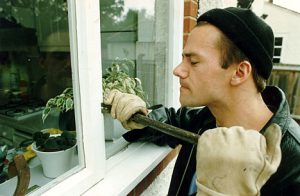

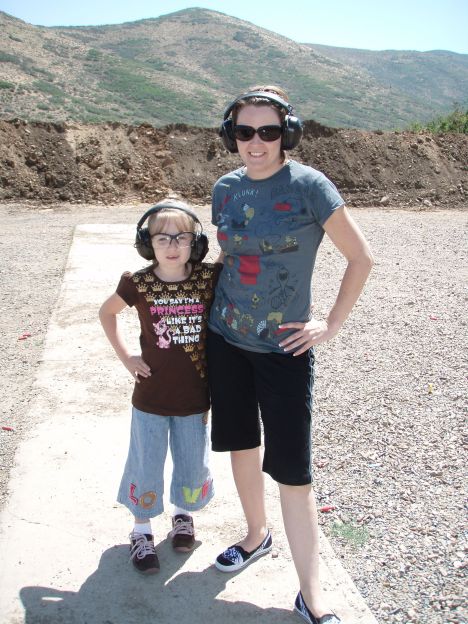
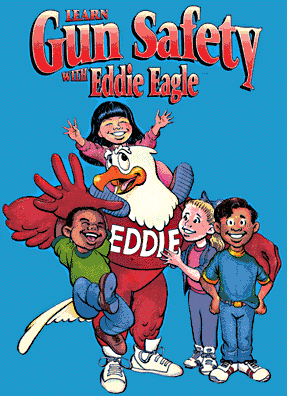
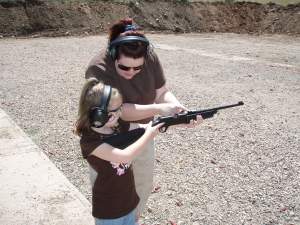
 Myth #1: “Children are constantly killed by accidental gun usage.”
Myth #1: “Children are constantly killed by accidental gun usage.” 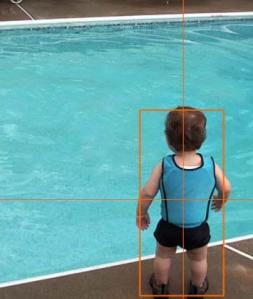 Based on statistics in the same year, roughly 550 children ages 0-14 were run over by cars, 800 drowned, 660 were burned to death in fires, and 1,850 died inside cars. Most of the 800 drowned were as a result of unattended children in a swimming pool, 93 drowned in bathtubs, and 36 died in 5-gallon buckets, yet we have no “mothers against bathtubs, buckets and swimming pools” organizations to speak of.
Based on statistics in the same year, roughly 550 children ages 0-14 were run over by cars, 800 drowned, 660 were burned to death in fires, and 1,850 died inside cars. Most of the 800 drowned were as a result of unattended children in a swimming pool, 93 drowned in bathtubs, and 36 died in 5-gallon buckets, yet we have no “mothers against bathtubs, buckets and swimming pools” organizations to speak of. Myth #2: “If I don’t have a gun, my children are safer and better protected.”
Myth #2: “If I don’t have a gun, my children are safer and better protected.” When the only exposure to guns that children have is on video games—where they “kill” people who get right back up to play some more—you are increasing the chance of them or their friends being injured in a gun accident whether you possess one or not.
When the only exposure to guns that children have is on video games—where they “kill” people who get right back up to play some more—you are increasing the chance of them or their friends being injured in a gun accident whether you possess one or not.  Suppose a criminal enters your home just as you’re about to put your 3 children down for bed.
Suppose a criminal enters your home just as you’re about to put your 3 children down for bed. If you do not prepare them mentally for such a situation now, they won’t be ready if such a horrific event does occur and you’ll risk more than one life being lost.
If you do not prepare them mentally for such a situation now, they won’t be ready if such a horrific event does occur and you’ll risk more than one life being lost.